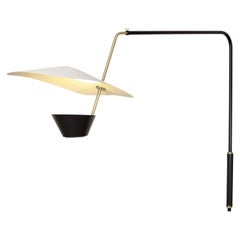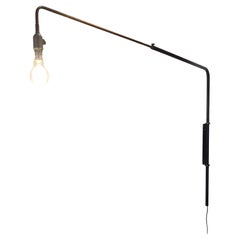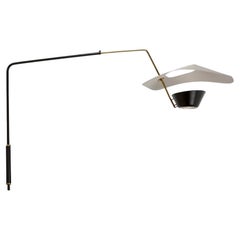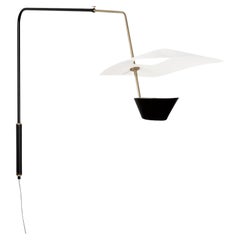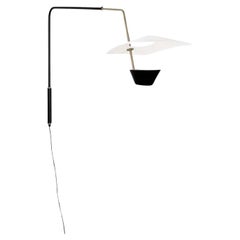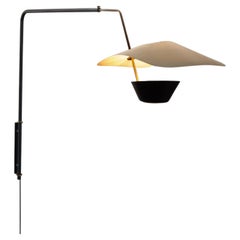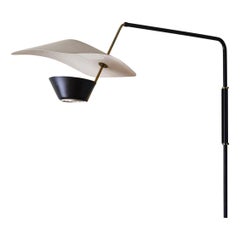Guariche G25
21st Century and Contemporary French Mid-Century Modern Wall Lights and ...
Brass, Aluminum, Steel
Vintage 1950s French Mid-Century Modern Wall Lights and Sconces
Metal, Brass
21st Century and Contemporary French Mid-Century Modern Wall Lights and ...
Metal, Brass
2010s French Wall Lights and Sconces
Metal, Brass
21st Century and Contemporary French Mid-Century Modern Wall Lights and ...
Metal, Steel
Recent Sales
Vintage 1950s French Mid-Century Modern Wall Lights and Sconces
Metal, Brass, Steel
Mid-20th Century French Mid-Century Modern Wall Lights and Sconces
Metal, Brass
21st Century and Contemporary French Mid-Century Modern Wall Lights and ...
Metal, Brass
Vintage 1950s French Mid-Century Modern Wall Lights and Sconces
Metal, Brass
Vintage 1950s Wall Lights and Sconces
Aluminum, Brass, Metal
People Also Browsed
Vintage 1950s French Mid-Century Modern Wall Lights and Sconces
Metal, Brass
2010s American Modern Table Lamps
Brass, Silver Leaf, Steel
2010s Table Lamps
Iron
2010s British Mid-Century Modern Daybeds
Bouclé, Oak
21st Century and Contemporary European Neoclassical Benches
Iron
21st Century and Contemporary Mexican Mid-Century Modern Table Lamps
Wood, Fabric, Linen, Fiberglass
2010s French Other Wall Mirrors
Ceramic
2010s American Mid-Century Modern Table Lamps
Brass
21st Century and Contemporary European Wall Lights and Sconces
Brass
2010s South African Minimalist Pedestals
Wood, Poplar, Burl
21st Century and Contemporary German Mid-Century Modern Table Lamps
Stainless Steel
2010s Ukrainian Modern Chairs
Fabric, Wool, Mohair, Bouclé, Felt, Cotton, Velvet, Acrylic, Ash
Mid-20th Century German Mid-Century Modern Wall Lights and Sconces
Metal, Aluminum, Brass
Vintage 1950s Italian Mid-Century Modern Wall Lights and Sconces
Aluminum, Brass
Mid-20th Century French Mid-Century Modern Wall Lights and Sconces
Metal, Steel
Vintage 1950s French Mid-Century Modern Wall Lights and Sconces
Aluminum, Brass
Pierre Guariche for sale on 1stDibs
The architect Pierre Guariche was one of the leading modern furniture and lighting designers of postwar France. Guariche can, in some ways, be thought of as the French version of Charles Eames: with his lean and angular chairs and slender, sculptural table lamps, he helped introduce a new aesthetic to the country’s interiors — and he was an eager pioneer in the use of new industrial materials and production techniques that emerged in the 1950s.
Guariche studied at the École Nationale Supérieure des Arts Décoratifs in Paris (the national design academy) under René Gabriel — a designer known for his quality, mass-produced furnishings, who served as a director of the postwar Ministry of Reconstruction. Two years after graduating in 1949, Guariche opened his own design firm, and he was soon creating pieces for numerous companies, including the lighting manufacturer Disderot.
Wood and metal were rationed in the years following the war and Guariche learned to do more with less. His chairs of the early 1950s include several designs with narrow, softly angular wooden frames; others, like the Tonneau chair, feature a single piece of molded plywood set atop metal legs. His lamps of the period are likely his best-known works. They include delicate compositions of slender steel tubes, and more flamboyant pieces such as the Kite lamp, with its curved metal reflector panel.
Always on the lookout for new materials, Guariche spent several years in the mid-1950s operating a firm making furniture in fiberglass and other plastics, along with Joseph André Motte and others. After 1957 — when Guariche was named head of design for the Belgian company Meurop and given a brief to create stylish, up-to-date chairs and cabinets — he began to look to America for ideas.
In the mid-1960s, Guariche produced several lines of deeply upholstered, rounded lounge chairs inspired by the Space Age look, and gave them names like Jupiter, Polaris and Luna. While Guariche always kept pace with his times, throughout his career he showed a consistent talent for producing elegant, eye-catching forms using a minimum of materials.
Find vintage Pierre Guariche furniture today on 1stDibs.
A Close Look at Mid-century-modern Furniture
Organically shaped, clean-lined and elegantly simple are three terms that well describe vintage mid-century modern furniture. The style, which emerged primarily in the years following World War II, is characterized by pieces that were conceived and made in an energetic, optimistic spirit by creators who believed that good design was an essential part of good living.
ORIGINS OF MID-CENTURY MODERN FURNITURE DESIGN
- Emerged during the mid-20th century
- Informed by European modernism, Bauhaus, International style, Scandinavian modernism and Frank Lloyd Wright’s architecture
- A heyday of innovation in postwar America
- Experimentation with new ideas, new materials and new forms flourished in Scandinavia, Italy, the former Czechoslovakia and elsewhere in Europe
CHARACTERISTICS OF MID-CENTURY MODERN FURNITURE DESIGN
- Simplicity, organic forms, clean lines
- A blend of neutral and bold Pop art colors
- Use of natural and man-made materials — alluring woods such as teak, rosewood and oak; steel, fiberglass and molded plywood
- Light-filled spaces with colorful upholstery
- Glass walls and an emphasis on the outdoors
- Promotion of functionality
MID-CENTURY MODERN FURNITURE DESIGNERS TO KNOW
- Charles and Ray Eames
- Eero Saarinen
- Milo Baughman
- Florence Knoll
- Harry Bertoia
- Isamu Noguchi
- George Nelson
- Danish modernists Hans Wegner and Arne Jacobsen, whose emphasis on natural materials and craftsmanship influenced American designers and vice versa
ICONIC MID-CENTURY MODERN FURNITURE DESIGNS
- Eames lounge chair
- Nelson daybed
- Florence Knoll sofa
- Egg chair
- Womb chair
- Noguchi coffee table
- Barcelona chair
VINTAGE MID-CENTURY MODERN FURNITURE ON 1STDIBS
The mid-century modern era saw leagues of postwar American architects and designers animated by new ideas and new technology. The lean, functionalist International-style architecture of Le Corbusier and Bauhaus eminences Ludwig Mies van der Rohe and Walter Gropius had been promoted in the United States during the 1930s by Philip Johnson and others. New building techniques, such as “post-and-beam” construction, allowed the International-style schemes to be realized on a small scale in open-plan houses with long walls of glass.
Materials developed for wartime use became available for domestic goods and were incorporated into mid-century modern furniture designs. Charles and Ray Eames and Eero Saarinen, who had experimented extensively with molded plywood, eagerly embraced fiberglass for pieces such as the La Chaise and the Womb chair, respectively.
Architect, writer and designer George Nelson created with his team shades for the Bubble lamp using a new translucent polymer skin and, as design director at Herman Miller, recruited the Eameses, Alexander Girard and others for projects at the legendary Michigan furniture manufacturer.
Harry Bertoia and Isamu Noguchi devised chairs and tables built of wire mesh and wire struts. Materials were repurposed too: The Danish-born designer Jens Risom created a line of chairs using surplus parachute straps for webbed seats and backrests.
The Risom lounge chair was among the first pieces of furniture commissioned and produced by celebrated manufacturer Knoll, a chief influencer in the rise of modern design in the United States, thanks to the work of Florence Knoll, the pioneering architect and designer who made the firm a leader in its field. The seating that Knoll created for office spaces — as well as pieces designed by Florence initially for commercial clients — soon became desirable for the home.
As the demand for casual, uncluttered furnishings grew, more mid-century furniture designers caught the spirit.
Classically oriented creators such as Edward Wormley, house designer for Dunbar Inc., offered such pieces as the sinuous Listen to Me chaise; the British expatriate T.H. Robsjohn-Gibbings switched gears, creating items such as the tiered, biomorphic Mesa table. There were Young Turks such as Paul McCobb, who designed holistic groups of sleek, blond wood furniture, and Milo Baughman, who espoused a West Coast aesthetic in minimalist teak dining tables and lushly upholstered chairs and sofas with angular steel frames.
Generations turn over, and mid-century modern remains arguably the most popular style going. As the collection of vintage mid-century modern chairs, dressers, coffee tables and other furniture for the living room, dining room, bedroom and elsewhere on 1stDibs demonstrates, this period saw one of the most delightful and dramatic flowerings of creativity in design history.
Finding the Right Sconces-wall-lights for You
From the kitchen to the bedroom and everywhere in between, there is one major part of home decor that you definitely want to master: lighting. Carefully selected vintage sconces and wall lights can do wonders in establishing mood and highlighting your distinctive personality.
We’re a long way from the candelabra-inspired chandeliers of the medieval era. Lighting is no longer merely practical, and lighting designers have been creating and reinventing lighting solutions for eons. Because of the advancements crafted by these venturesome makers, we now have the opportunity to bring unique, customizable lighting solutions into our homes.
It’s never been easier to create dramatic bedrooms, cozy kitchen areas and cheerful bars than it is today. Think of an elegant wall sconce as functional and as a work of art, adding both light and style to your hallways, whimsical kids’ rooms and elsewhere.
When choosing a lighting solution, first determine what your needs are: Will you opt for a moody or a bright feel? The room that will serve as your home office will need adequate lighting — think “the brighter, the better” for this particular setting.
For the bedroom, bedside wall lamps with warm-temperature bulbs instead of bedside table lamps could be the way to go to induce a sense of calm or intimacy. Try to match the style of the wall light or sconce that you’re installing to the overall design scheme of your room. It’s never “just a light.” You should approach the lighting of a room with a mindset that is one part practical and one part aesthetics-driven.
Let 1stDibs help you set the mood with the right antique and vintage wall lights and sconces for your home. Our collection includes every kind of fixture, from sculptural works by Austrian craftsman J.T. Kalmar to chic industrial-style wall sconces, from adjustable painted aluminum wall lamps designed by Artemide to a wide variety of minimalist mid-century modern masterpieces.
